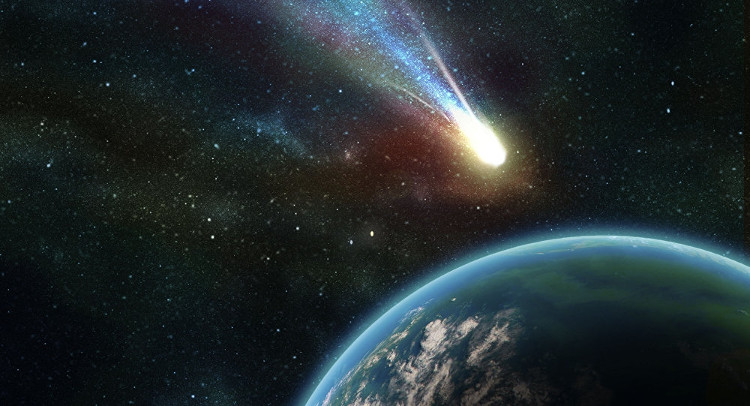America plans to block apocalyptic risk
US officials have drawn up an emergency plan to prevent apocalyptic risk caused by asteroids.
On January 5, the White House released a 25-page report called "Near-Earth Objects Prevention Strategy (NNEOPS)" that is ready to deal with the threat of "killer asteroids" if They are capable of colliding with the earth.
The report was written by the Interagency Working Group (IWG) on the Detection and Mitigation of the Impact of Near-Earth Objects (DAMIEN). The purpose of the report is to improve the preparedness in dealing with threats from near-earth objects (NEO). In order to do this, IWG believes that cooperation between countries should be strengthened, and at the same time, the shortage of possibilities.
The report outlines seven strategic objectives, including: improving the detection and characterization of NEO features; improving models and forecasting of NEO developments; developing NEO deflection methods; develop an emergency situation if a collision occurs; reaction to collisions and recovery measures; take advantage and support international cooperation if collisions occur; finally coordinating communication between US government agencies and establishing a series of procedures if a potential NEO collision is detected.

US officials have drawn up an emergency plan to prevent apocalyptic risk caused by asteroids.(Photo: FLICKR).
Some specific measures include: Missile launchers intercept asteroids; developing high-energy solutions to "chase" too large meteorites away from the earth; large-scale evacuation .
Earlier, in December 2016, senior scientist Joseph Nuth of NASA (NASA), warned if humans discovered a large-sized NEO on the road to crash into the earth. , there will not be enough time to build this NEO deflector.
In August 2015, NASA published a report saying that all potentially dangerous asteroids that humans had known had only a chance to influence the earth by less than 0.01% in the next 100 years.
However, the possibility of an unexpected "killer asteroid" is entirely possible. Once falling into the sea, asteroids can cause powerful tsunamis and earthquakes to wipe out coastal areas.
The nonprofit organization that hunts the NEO, the B612 Foundation, said NASA had not yet identified about 1 million asteroids that could potentially erase a city or possibly cause the world economy to collapse. Even quite small asteroids, such as the broken Chelyabinsk meteorite in the sky of Russia in 2013, can also cause serious damage.
If a larger asteroid, for example a meteorite Chicxulub, hits the earth 66 million years ago, it could completely destroy most of the life on the surface of the blue planet.
- The Apocalyptic Clock inched for another two minutes
- Anti-apocalyptic tunnel holds precious books in Norway
- Decode the plane 'Doomsday' of America
- Video: Imagine the process of reviving the post-apocalyptic civilization
- Humanity's 'anti-Apocalyptic' cellar is difficult to survive until Apocalypse
- 'Apocalyptic Clock' reported the time when humanity had destroyed 2 minutes
- Summarize news 'hot' June 2 weeks
- 500 million year old stone block balancing in the depths of thousands of meters
- 'Apocalyptic Tunnel' invested $ 4.4 million to combat climate change
- America plans to conquer Mars from the moon
- The US revealed plans to re-conquer the Moon
- Half of America faces earthquake risks
 10 famous Isaac Newton inventions
10 famous Isaac Newton inventions 'Doomsday 2021' and Mayan conspiracy theories
'Doomsday 2021' and Mayan conspiracy theories 7 perspective of the destruction of the Earth
7 perspective of the destruction of the Earth Isaac Newton predicted the world would end in 2060
Isaac Newton predicted the world would end in 2060